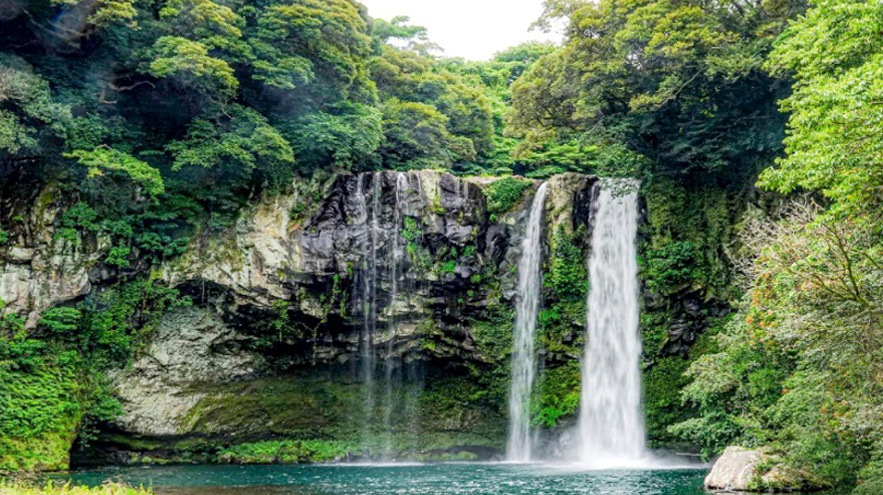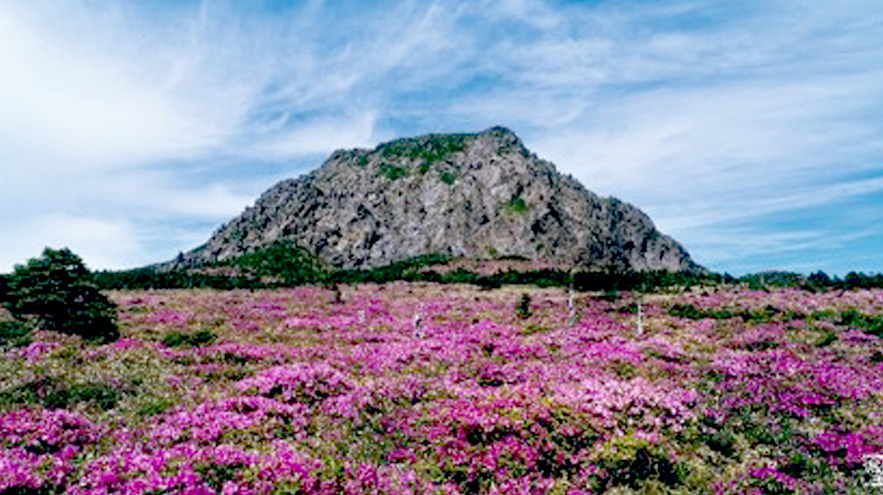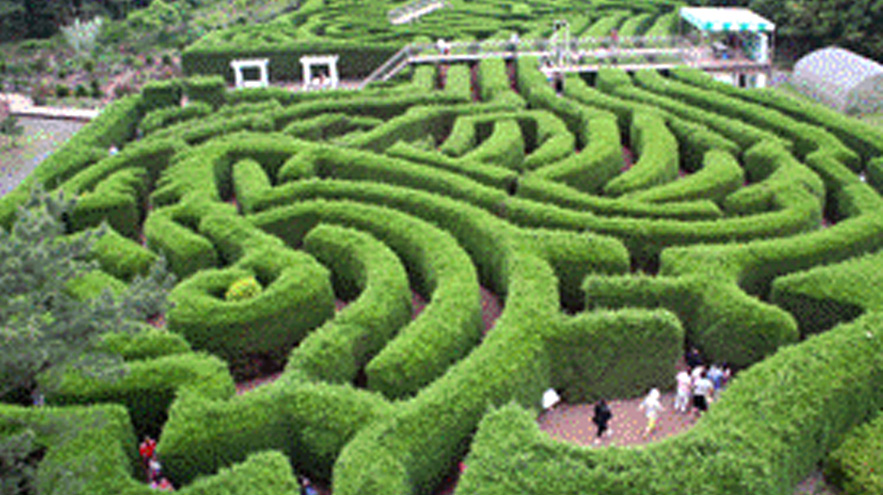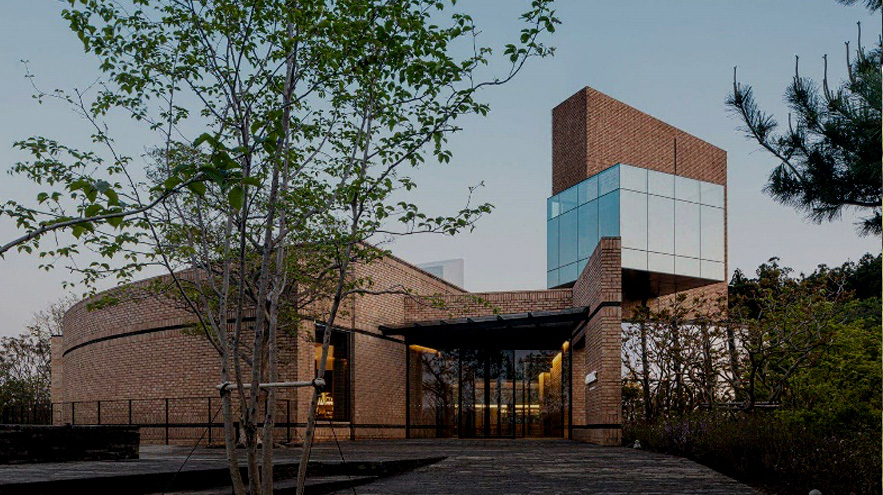Tourist Attractions
Tourist Attractions

At Cheonjiyeon Falls, white water falls from the rock cliff and make a thundering sound.
It gets its name because it means “sky connected with land.” It is 22m high and 12m wide, and the view and the sound that the waters create when they fall is magnificent. Not only Elaeocarpus, which is designated as Natural Monument 163, but also a variety of temperate plants such as brambles, Psilotum nudum (L.) Griseb., Siebold’s chinquapin, Shiny xylosma, and camellias grow in the valley near Cheonjiyeon Falls. It is also famous for the Natural Habitat for Giant Mottled Eels (Natural Monument 27), which are nocturnal.

(UNESCO World Natural Heritage Site)
Seongsan Ilchulbong Peak, which is 180m above sea level, erupted underwater in the ocean about 5,000 years ago, which makes it a very rare case among the many craters in Jeju Island. A scene in the movie ‘Lee Chang-ho’s Baseball Team’ (directed by Lee Chang-ho) was filmed here. Though people used to farm in the area, it is now a natural habitat for 200 types of vegetation such as silvergrass, vine, Pseudosasa japonica, and giant angelica as well as a natural habitat for a variety of wild animals.

As one of Korea’s 3 spirit mountains, Hallasan Mountain is located on the southernmost part of the Korean Peninsula, and lays claim to the title of South Korea’s tallest mountain with the height of 1,950m above sea level.
Home to all sorts of vegetation, the mountain possesses immense scientific value and is a veritable treasure trove of animals and plants, leading to the designation of Hallasan Mountain Natural Reserve as Natural Monument 182 on October 12, 1966.

The columnar joints near the coast in the eastern Jungmun Tourist Complex, where the waves breaks and dark red hexagonal stones make up tall layers, is considered a gift of nature and was designated as Natural Monument No. 443 (12/27/04). If you stand in front of the joints you can see the waves hitting the stones and breaking into white bubbles, which feels as if they carry the sad stories of stone carvers, and the scenery is incredible as when the waves are turbulent they reach a height of about 20m. The place is becoming ever more popular with tourists as they walk around and look at the incredible scenery along with the fresh scent of the sea.

Located next to Manjanggul (Cave), Kimnyoung Maze Park encourages visitors to have fun, let loose, and enjoy the “maze” theme. The first maze park in Korea, which was opened in 1987 by American professor F.H. Dustin, consists of 7 symbols representing the history and geography of Jeju. Kimnyoung Maze Park is the first symbolic maze park in Asia. With dominant species of ever-green Leylandii and Jeju scoria, the park is eco-friendly and attracts many visitors.
It is also known as the first cat park in Korea where about 50 cats hang around. You will have a wonderful time wondering around Kimnyoung Maze Park, which is suitable for everyone.It is also known as the first cat park in Korea where about 50 cats hang around. You will have a wonderful time wondering around Kimnyoung Maze Park, which is suitable for everyone.

O’sulloc opened on September 1st, 2001, and is located at the entrance of Seogwang Tea Garden in Jeju Island. The building itself is the materialization of green tea cup, and it is a place of culture, where tradition and modern east and west are harmonized, and a nature-friendly resting area.
O’sulloc has the ‘O’ as in the interjection Oh!, the origin of sulloc, only sulloc, of sulloc cha.
It is good to experience everything about Sulloc Cha to understand the traditional tea culture of Korea and green tea.
Photo images ⓒ Jeju Tourism Organization, Visitjeju.net
